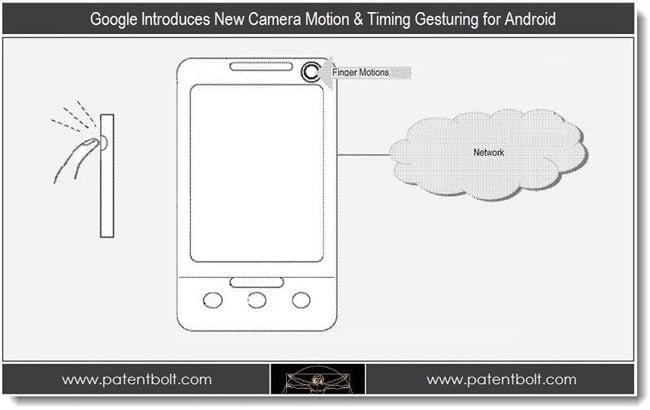Details have been revealed on a new Google patent for their Android mobile OS, which could see future Android devices controlled by motions which the device’s camera will recognize.
The new patent would mean that users would also be able to map out a combination of gestures, which could then be used to perform various functions, like browsing the web, playing music, and more.

Aspects of Google’s invention provide systems and methods of controlling a mobile device by detecting and recognizing an object’s motions based on images taken by a camera on Android devices as well as recognizing the timing information related to the motions.
Potential Applications of Motion Control
The potential applications of this technology are vast and varied. Imagine being able to control your smartphone without even touching it. For instance, you could swipe your hand in front of the camera to scroll through a webpage or make a pinching motion to zoom in on a photo. This could be particularly useful in situations where your hands are dirty or occupied, such as while cooking or working on a project. Additionally, this technology could be a game-changer for accessibility, providing new ways for individuals with physical disabilities to interact with their devices.
Moreover, the ability to map out a combination of gestures means that users could customize their device interactions to suit their personal preferences. For example, a specific hand wave could be programmed to open a favorite app, or a series of gestures could be used to control media playback, such as skipping tracks or adjusting the volume.
Technical Aspects and Challenges
Implementing motion control technology in Android devices involves several technical challenges. The device’s camera must be capable of accurately capturing and interpreting a wide range of motions in various lighting conditions. Additionally, the software must be sophisticated enough to distinguish between intentional gestures and random movements, ensuring that the device responds only to deliberate commands.
Another challenge is the processing power required to analyze motion data in real-time. This could potentially drain the device’s battery more quickly, so efficient algorithms and power management strategies would be essential. Furthermore, privacy concerns must be addressed, as the camera would need to be active and monitoring for gestures, which could raise issues about unauthorized data collection and surveillance.
Head on over to Patent Bolt for in-depth details on this new Android patent from Google. There are no details as yet on when, if ever, we will see this technology available in Google’s Android devices.
Thanks, Jack, for the Tip!
Latest Geeky Gadgets Deals
Disclosure: Some of our articles include affiliate links. If you buy something through one of these links, Geeky Gadgets may earn an affiliate commission. Learn about our Disclosure Policy.